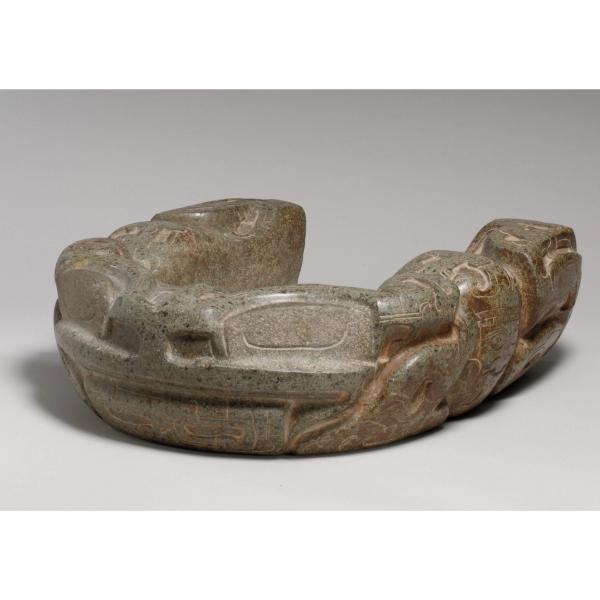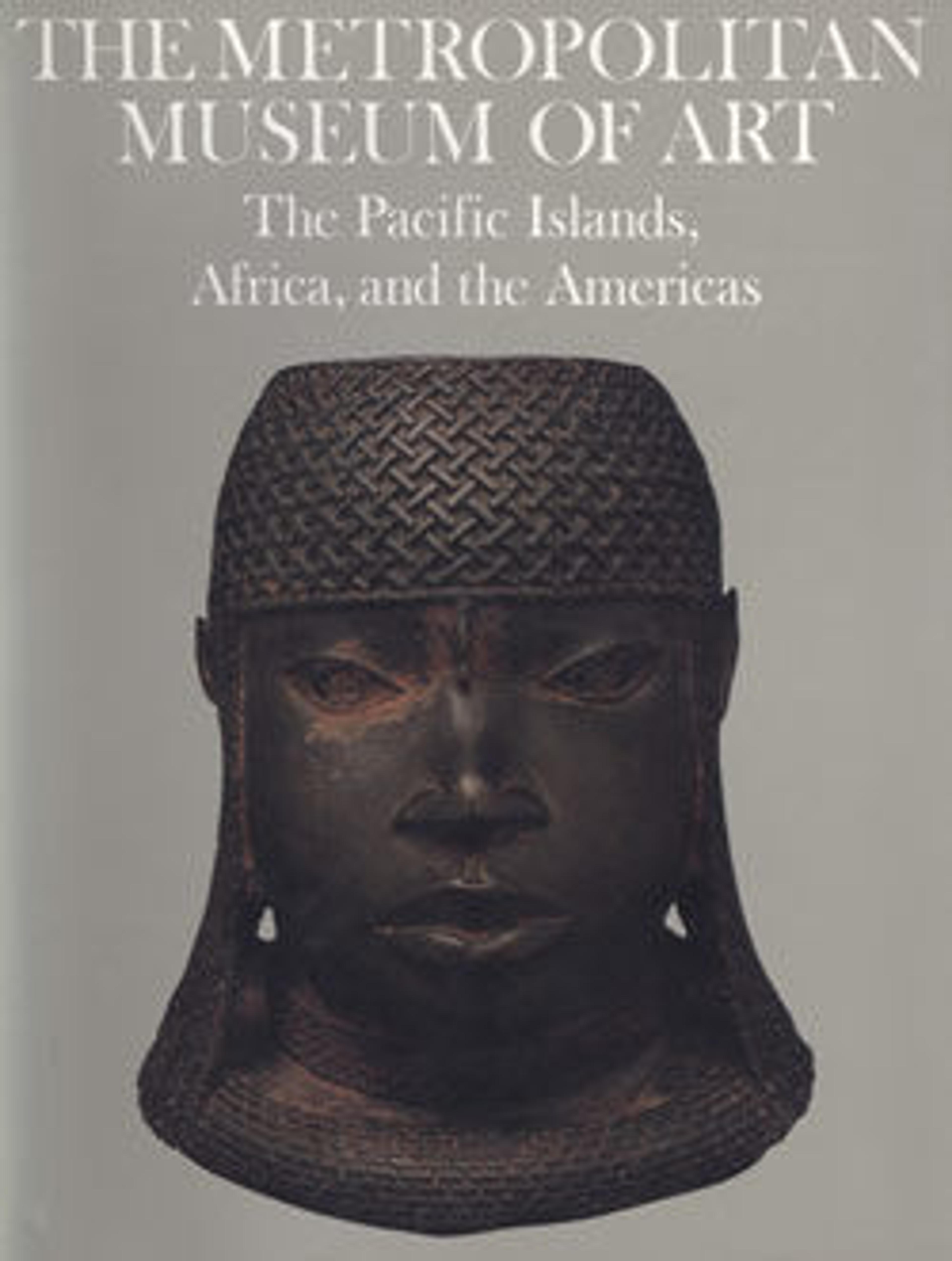Frog yoke
Artwork Details
- Title: Frog yoke
- Artist: Classic Veracruz artist(s)
- Date: 600-900 CE
- Geography: Mexico, Mesoamerica, Veracruz
- Culture: Veracruz
- Medium: Greenstone, pigment (probably hematite)
- Dimensions: H. 5 x W. 14 7/8 x D. 15 3/4 in. (12.7 x 37.8 x 40 cm)
- Classification: Stone-Sculpture
- Credit Line: The Michael C. Rockefeller Memorial Collection, Gift of Nelson A. Rockefeller, 1963
- Object Number: 1978.412.15
- Curatorial Department: The Michael C. Rockefeller Wing
Audio

1608. Frog yoke, Classic Veracruz artist(s)
Patricia Sarro and Manuel Aguilar-Moreno
PATRICIA SARRO: This yoke, or a yugo in Spanish, is most likely a stone replica of an item made in lighter materials that was worn during rituals related to the Mesoamerican ballgame.
JOSÉ MARÍA YAZPIK (NARRATOR): This ceremonial stone version would not have been worn. Patricia Sarro, Youngstown State University.
PATRICIA SARRO: In Mesoamerican mythology, the ballcourt was seen as a gateway between the world and the underworld.
This open yoke has been carved in the form of an amphibian, most likely a toad. With its bulging eyes, small nostrils, wide mouth and curving tongue, it is likely the depiction of a toad as the earth monster who resides at the entrance of the watery underworld.
JOSÉ MARÍA YAZPIK: Over 2,800 ancient ball courts have been discovered across the region, at the sites of great cities, and in small villages. Manuel Aguilar, professor of art history at California State University.
MANUEL AGUILAR-MORENO: The ballgame was a ritual activity in which the ball represented the sun and the human beings were agents helping the sun to survive. When the sun was devoured by night, the sun would have the nourishment given by the sacrifices that were associated to the ballgame. And in that way, it could survive the daily fight against the night forces.
JOSÉ MARÍA YAZPIK: The ball game, a central feature of all Mesoamerican cultures, evokes cosmic cycles and the opposing forces that create our reality.
MANUEL AGUILAR-MORENO: For example, life and death. Day and night. You have light and darkness… and you have fertility and drought and you need to nurture the gods, because we need to thank them that they gave us our life. And the elixir of life is blood. So humans felt committed to return some blood to the gods as a thanksgiving.
JOSÉ MARÍA YAZPIK: By the time the Spanish colonizers witnessed the ballgame in the 16th century, it no longer involved sacrifice. The game continues to both evolve and endure: a version of it is played on courts in Mexico and in the United States today.
MANUEL AGUILAR-MORENO: I would say it's a kind of pride in maintaining all traditions and they enjoy the game, it’s a game that is so unique, so different to anything else that they feel pride in playing it.
Listen to more about this artwork
More Artwork
Research Resources
The Met provides unparalleled resources for research and welcomes an international community of students and scholars. The Met's Open Access API is where creators and researchers can connect to the The Met collection. Open Access data and public domain images are available for unrestricted commercial and noncommercial use without permission or fee.
To request images under copyright and other restrictions, please use this Image Request form.
Feedback
We continue to research and examine historical and cultural context for objects in The Met collection. If you have comments or questions about this object record, please contact us using the form below. The Museum looks forward to receiving your comments.
